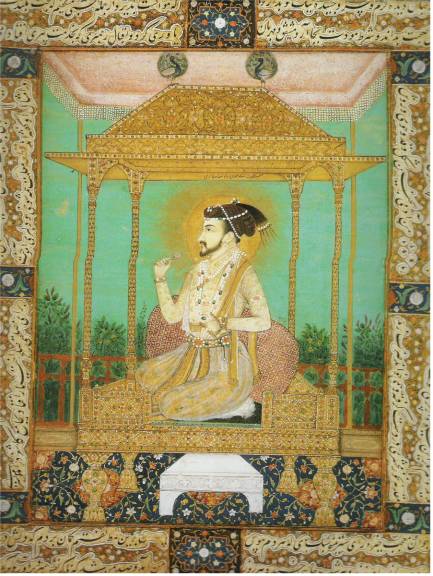December 8, 2011
"Gothambu unda" (wheat balls) have been famous in Kerala as the standard prison food. In fact, to eat "unda" has been a euphemism for going to jail. This changed when the previous government ordered the balls to be rolled and flattened (not a euphemism for some police truth extraction technique) into chappatis. The central jail at Poojapura in the city, consequently, had a chappati-making machine installed at the cost of around Rs. 3 lakhs.
Now the prison takes catering orders!
Over 8000 chappatis are made every day. Only half of this is used within the prison. Padmanabhaswami temple alone requires 10,000 chappatis to meet the Sabarimala season rush. Prisoners feeding devotees! Profound! More party and restaurant orders are pouring in. Reputation of the quality of whats coming from behind the bars has summarily beaten whats served up in local bars! The city restaurants charge as much as Rs 10 for a chappati while the prison-baked ones come at a cheap Rs.2. The stupendous success of the program has inspired the prison authorities to venture into vegetable and chicken curries next.
Though I have been restricted to indoors for almost a month now, my home is no prison. And the food is certainly fabulous. Today's special was 'thirandi' (stingray). I haven't had this fish with its cartilaginous chewy bones since the 90s. Amma has been slowly ramping up the spice level of the curries so that my surgically adjusted intestine can be eased back into regular (i.e. hot) food.
Staying on the the culinary theme, as soon as he ascended to the throne, Aurangazeb quit eating meat as a form of penance. In 1665, when a comet appeared bright over the Indian skies for four weeks, the emperor restricted himself to very little water and millet bread in a bid to prevent the divine wrath in the form of drought and famine that seemed to follow comets! During a different period, the emperor of India survived on whatever food he could get from the sale of silk caps that he hand embroidered or his calligraphy of select Koran verses. All the while, he sat on a dazzling Peacock Throne (construction started by Tamarlane, finished by ShahJahan) whose value Tavernier estimates as 1070 lakh rupees in the 17th century.
Tavernier writes that there were around 1,200,000 among the idolators (Hindus) who had made a "profession of renouncing the world" while in reality were all "great rascals". A spot on assessment about gurus and swamis that has stood the test of time for all these centuries!
For the French traveler, everything that is not a mosque in India is a Pagoda. This causes him to confuse the relics of Buddha which were dumped at the sea by the Portuguese as "bones of a Holy Monkey"! In the kingdom of Bijapur, he engages in a bit of sleuth work at a temple. After learning from the priest that a distressed woman at the temple, who had come seeking divine help to find her missing son, had been made to wait because 'god' hasn't yet spoken to her, Tavernier sneaks into the sanctum at night and discovers that there is a chamber behind the main idol where the priest can hide and 'speak from the heavens'. He also mentions another temple which had mechanisms that allowed movement of the idol itself to add to the dramatic effect.
Mirroring my situation from way back in the December of 2000, after the first semester at A&M university, for the last couple of days, I must admit that I have been filling a tinge of nostalgia for College Station. The long walks, the quiet parks, the library...
Back then, I was told that it was a natural emotional plateau that majority of international students go through after their first semester abroad. I will avoid hoping for any kind of profitable introspection this time since I have read this excellent interview with Peter Carruthers:http://www.3ammagazine.com/3am/mind-reader/
The International Film Festival of Kerala(IFFK) opens in the city tomorrow. Some roads in front of the main theaters are being patched over with great urgency. I wonder how the public works department can do a job that will fall apart after the exact duration of the festival consistently, year after year. May be they should be employed to calculate the life span of suspicious dams. The greater coucal or crow pheasant is the emblem of the festival this year along with the original shadow puppet figures drawn of the legendary director, Aravindan.
It was reported that when Tom Cruise arrived in Mumbai recently to promote the new Mission Impossible movie, he was greeted by screaming fans. The "fans" were in fact Bollywood extras who were paid Rs. 150 and a buffet for this job. Will there be similar fans at the Thiruvananthapuram airport for the delegates who will be landing for IFFK?!
Going back to food, what's with the Kenny G-sque saxophone background score that seems universal to all the Malayalam channel cookery shows? It's stretching 'music be the food of love' a bit too far. Though I said Kenny G-sque, what plays usually is of terribly lower quality which conjures up dubious associations! I am pretty sure I have heard the background sax pieces that played today for egg-bajji and beetroot puttu, years ago in an educational, episodic movie that featured a series of unusually well-built young men delivering sausage pizzas to blonde 18 year olds! A notable difference was on Podhigai channel this afternoon. A heavily powdered up, quintessential 'Mylapore maami' was cooking up Karthika-special delicacies. Soothing Jal-tarang drowned most of what she was saying.



No comments:
Post a Comment